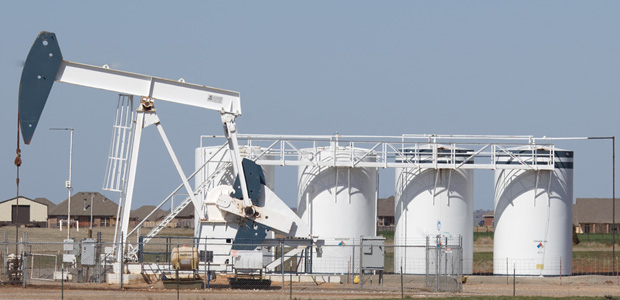
Regulatory Compliance
Procedure Assures Quad Oa Compliance
By Andy Johnson
Editor’s Note: The following article is reprinted with permission from the Independent Oil & Gas Association of New York’s newsletter, The Pipeline.
FALCONER, N.Y.–As of Aug. 2, new federal regulations for fugitive emissions require oil and gas companies to curb emissions of methane and volatile organic compounds from affected onshore facilities. The U.S. Environmental Protection Agency developed the regulations under Title 40 CFR Part 60 Subpart OOOOa (Quad Oa), which are to be enforced on all affected facilities that commenced construction, modification, or reconstruction after Aug. 23, 2011.
Affected facilities include natural gas well sites, oil well sites, production gathering and boosting stations, natural gas processing plants, and natural gas compressor stations (transmission and storage).
Complying with the new regulations will require owners and operators to develop their own leak detection and repair (LDAR) programs because leaks are considered fugitive emissions.
The intent of this article is to share knowledge based on researching the regulations and conversations with EPA so that owners/operators can gain a broad understanding of the resources, equipment, and methods necessary to implement successful LDAR programs and operate in compliance.
EPA’s regulations allow operators to detect leaks using either optical gas imaging (OGI) or Method 21. OGI employs optical instruments to “see” emissions of methane and VOCs that otherwise would be invisible to the human eye. The OGI method is preferred by EPA for a variety of reasons, including faster and more accurate results. However, OGI can be more expensive because of high equipment costs and additional training.
Method 21 allows for an alternative approach to leak detection using a portable VOC monitoring instrument such as a photoionization device (PID). Method 21 devices must be calibrated to detect methane in parts per million. The leak repair threshold using Method 21 is 500 ppm.
Example Procedure
The following example procedure is based on Method 21, and was developed to provide a general understanding of a compliant LDAR program. OGI methods would follow a similar procedure. The example lays out the steps a routine inspection might follow.
On arriving at a facility, safety must always be the number one priority.
The operator would begin by conducting a visual inspection of equipment components. He should document any safety concerns or changes to the facility.
At a typical natural gas well site, leak detection would be conducted at all required “components,” including the wellhead, attached piping, valves, fittings, flanges, and open-ended lines.
The operator would take photos, record GPS location data, and create a sketch or diagram of the well and components to be monitored.
A unique identification (ID) number must be assigned to each component. Any components considered “unsafe to monitor” must be documented on a separate list organized by ID number with an explanation of the conditions causing the potential hazard.
Begin a leak survey using a PID type instrument. Place the probe at the surface of the component interface where leakage could occur and move the probe along the interface while observing the instrument readout. Locate the maximum reading by moving the probe around the interface.
Keep the probe at the location of the maximum reading for two times the response factor (typically less than 30 seconds). If the concentration is above 500 ppm, the component is considered to have a leak and must be repaired within 30 days, as long as the repair is feasible. If it is not feasible to repair in 30 days, an explanation must be documented.
When a leak is observed, the following procedure would apply:
- Attach an ID tag to the component.
- Record the component’s unique ID number.
- Record the concentration (ppm) of the leak and determine the next course of action.
If the repair can be made immediately (e.g., tightening a valve connection), it can be fixed right away, assuming it is safe to do so. If the repair cannot be completed immediately, the operator would tag the component and schedule the repair within 30 days, if it is feasible to do so.
If the repair is not feasible within 30 days (e.g., requires shutting down the unit, process, etc.), the component may be placed on the “delay of repair list” by incorporating the following information:
- The ID number;
- A detailed explanation as to why the component cannot be repaired immediately; and
- An estimated date to complete the repair.
After the leak has been repaired, resurvey the leak and document the results, thereby completing the procedure. Good documentation and record keeping is important, and must be saved for compliance and reporting purposes.
The initial compliance period for the new Subpart OOOOa regulations began on Aug. 2, 2016, and ends Aug. 2, 2017. Initial LDAR reports are due to the EPA by Oct. 31, 2017. Subsequent reports are due annually thereafter.
After the initial leak survey, the LDAR program must be conducted twice a year at well sites and up to four times a year at compressor sites.

Andy Johnson owns EcoStrategies Engineering & Surveying in Falconer, N.Y., which provides a range of services to the oil and gas industry. Johnson holds a B.S. and M.S. in engineering, and has 12 years of consulting experience with oil and gas companies. He is a licensed professional engineer in New York, Pennsylvania, Ohio, and West Virginia. He may be contacted at .(JavaScript must be enabled to view this email address).
For other great articles about exploration, drilling, completions and production, subscribe to The American Oil & Gas Reporter and bookmark www.aogr.com.













